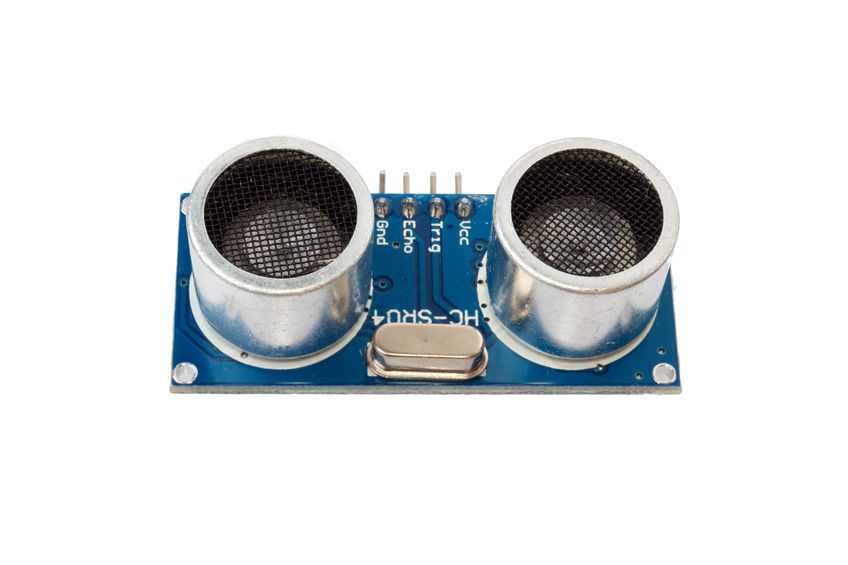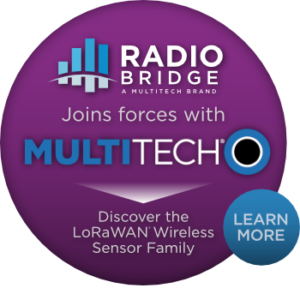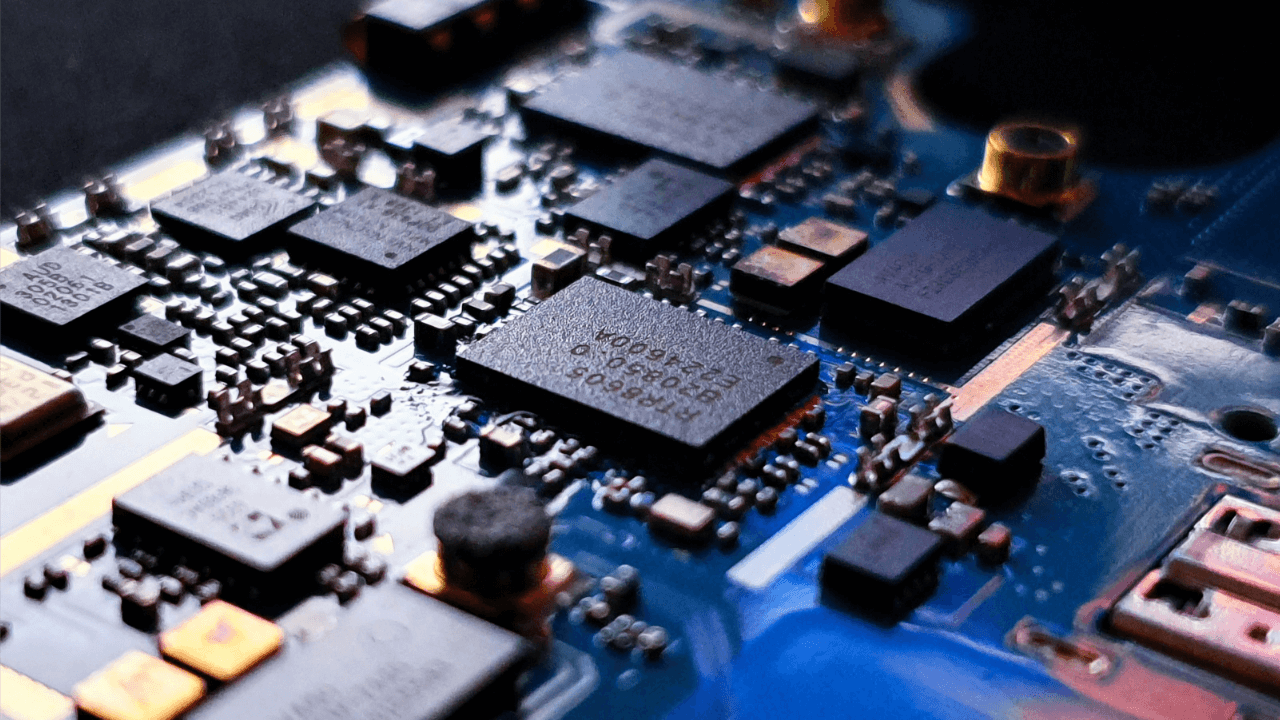
Ultrasonic sensors are a non-contact method of remotely monitoring the distance between a solid object and/or liquids in a container. From an industrial standpoint, they can be used in various ways, such as measuring a container’s fill or the distance to an object with a solid flat surface.
Ultrasonic Sensors: How They Work
Ultrasonic sensors work in a similar way to radar and sonar systems. They do not require very much electrical power to run, which makes them ideal for battery-powered applications.
There are two parts to the sensor – a transmitter and a receiver. The transmitter emits high-frequency sound waves, and the receiver processes the echo that results from that signal bouncing back from an object. The results are then calculated using a simple equation:
Time = Distance ÷ Speed
Ultrasonic Sensors: Use Cases
The Smart Factory
In any robotics-driven application, distance measurement and range detection are critical functions. Ultrasonic sensors are used to detect both distance and proximity, supporting industrial automation and process control in an almost infinite range of industries.
On the factory floor, ultrasonic sensors are essential to the automation process. They are used for various functions, including high-speed counting, item sorting, liquid level controls, and robotic machine sensing. They also play a part in product testing, detecting product irregularities and supporting quality control and quality assurance protocols.
Energy Sector, Beverage, and Pharmaceutical Industry
In the energy sector, ultrasonic level sensors measure liquid levels in oil field tanks, simplifying the management and monitoring of what is often vast, distributed resources. The tank’s size and height are gauged against the frequencies that are echoed back to the sensor, delivering an accurate representation of tank fill.
Of course, many other industries require such controls, including the beverage industry, chemical production, and pharmaceuticals, where precision is critical. Liquid level sensors support process control by monitoring and controlling tank fill levels and can be programmed to alert to overfills or low fills.
For any of these use cases, liquid level sensors also facilitate more precise inventory management, helping maintain profitability and prevent loss.
Supply Chain and Warehousing
Sensors are essential equipment in logistics and supply chain operations, where they are installed on loading docks to detect the approach of trucks, guide robotic equipment, and help employees monitor daily operations.
In the warehouse, ultrasonic sensors are used to monitor storage conditions and availability. In using ultrasonic sensors, companies can reduce costs, mitigate risk, boost profits, and improve outcomes from end-to-end.
Other robotic functions that rely on sensors in the smart factory include moving items from one place to another, picking product orders, packing and labeling, palletizing, and product assembly. For any facility that moves massive volumes of product, sensors help them do so quickly and efficiently with a minimum number of employees.
High-efficiency processes such as these help warehousing operations grow and maintain profitability as they can process higher volumes and serve more customers in less time and at lower cost.
Waste Management
Ultrasonic sensors enable the ability to measure garbage levels in dumpsters, making remote management easy – even when it involves hundreds or thousands of clients. With the ability to accurately monitor and analyze client data, waste management companies become more efficient with their time and effort, and more cost-effective for all stakeholders. Service is triggered only when dumpsters reach a certain level, ensuring trucks are sent to the account only when needed.
Chemical Level Monitoring
Monitoring chemical tank levels can be challenging because of the corrosive nature of the substances held in the tank. Whether it’s a holding tank or a mixing tank, precision is essential to ensure safety and integrity. Chemical level monitoring assures that tank contents maintain optimal conditions and fill levels, preventing injury, assuring inventory accuracy, and maintaining cost-efficiency.
For highly corrosive environments, special chemically-inert coatings are applied to the sensor to protect it from degradation, a strategy that performs well in most situations. This specialized option is recommended for gasoline, diesel, and chlorobenzene tanks as well as hydrochloric acid, hydrofluoric acid, Parylene, PVC, and for use in sewers.
Medical Device Applications
Many medical devices require high-precision accuracy, and often in a sterile environment. Ultrasonic sensors are capable of measuring liquids without coming in contact with the substance. Sensors are applied directly to the vessel or clamped onto tubing to measure flow and detect obstructions.
Commonly used in applications such as blood monitoring, drug administration, and dialysis, sensors are used to assure flow rates, monitor fluid levels in drip chambers, or to detect even the tiniest air bubbles within the tubes.
Ultrasonic sensors are also common in pharmaceutical manufacturing and cleanroom applications, where precise management of fluids is essential to a safe, consistent result.
Smart Environments
Smart environments include smart buildings and smart cities. Both are scaled approaches that rely on ultrasonic sensors to collect data and detect issues that affect the safety, security, comfort, and efficiency of any system they are connected to.
For example, sensors can detect air quality and temperature within environments. Sensors also monitor water volumes, temperature, and pressure, helping building managers prevent loss and reduce maintenance costs by detecting anomalies as soon as they happen. Similarly, sensors assure the cost-effective operation of HVAC, lighting, and other building systems. Any changes to the configured thresholds trigger an alert in real-time so that stakeholders can respond before it becomes a crisis situation.
Successful applications of sensor-equipped smart environments include hospitals, correctional facilities, schools, factories, shopping malls, apartment buildings, government facilities, and city infrastructure. In addition to providing real-time monitoring and alerts from sensor sources, the data collected fuels a better understanding of system usage, volumes, and related costs, supporting more accurate forecasting and planning processes.
Agricultural Applications
Large-scale farming operations are highly automated and cover almost every process from field to store. Ultrasonic sensors are used to monitor these processes, allowing producers to keep costs to a minimum so that the food we purchase is fresh, affordable, and safe for us to eat.
Automated picking machines rely on sensors to detect adequately sized fruit and safely harvest the crop to reduce damage to the plant and maximize shelf-life.
Ultrasonic sensors are also used to monitor chemical concentrations, water quality, and remote machine operations, assuring quality control and compliance with FDA food safety requirements.
Limitations of Ultrasonic Sensors
Ultrasonic sensor technology is a vital component of many modern processes and conveniences, but it does have its limitations.
For example, the sensors must have a direct line-of-sight to the object it’s sensing, otherwise, it will not receive an accurate response. There must also be an adequate surface area for the ultrasonic waves to bounce off, so tiny objects might not provide consistent or reliable results.
Surface materials also tend to impact the response, as smooth surfaces have better sonic reflective qualities than rough ones. Additionally, distance can be an issue. Ultrasonic sensors do not work reliably at a distance of more than 70 feet.
Low-density objects, such as fabric or certain types of foam, do not deliver reliable results. These objects tend to absorb sound waves, rather than reflect them, so attempting to detect such items, especially at a long range, is not recommended. However, there is a plus side to this point, as the sensors won’t pick up things like dust or rain.
Temperature and humidity also affect the accuracy of ultrasonic sensor data. In some applications, corrective calculations can be applied. But in situations where readings might be affected by high winds or airborne particles, it can be tough to achieve consistent results.
Ultrasonic Sensor Benefits
Automation is one of the most significant industrial advances of our generation. It makes processes safer, more reliable, efficient, and cost-effective, keeping costs low for the end-user and preserving profit margins for producers.
Ultrasonic sensors are an essential component of automation, supporting process improvement, quality control, and better management of resources.
To sum up, here are some of the many benefits ultrasonic sensors can provide:
- Accurately determines the distance between objects.
- Easy to use and install on existing equipment.
- Interfaces with many types of controllers.
- Manage processes more efficiently.
- Simplifies the management of expensive resources.
- Works reliably in extreme environments.
- Works in the dark.
- Works with transparent objects.
- Low-cost option, high-value results.
- Minimal power requirements.
- Operates on LoRaWAN® network, enabling long-range transmissions with very low power consumption.
If you would like to learn more about Radio Bridge, a MultiTech brand, ultrasonic sensors, we’d love to show you what they can do for you. Reach out today, and let’s talk about it.





